
OR
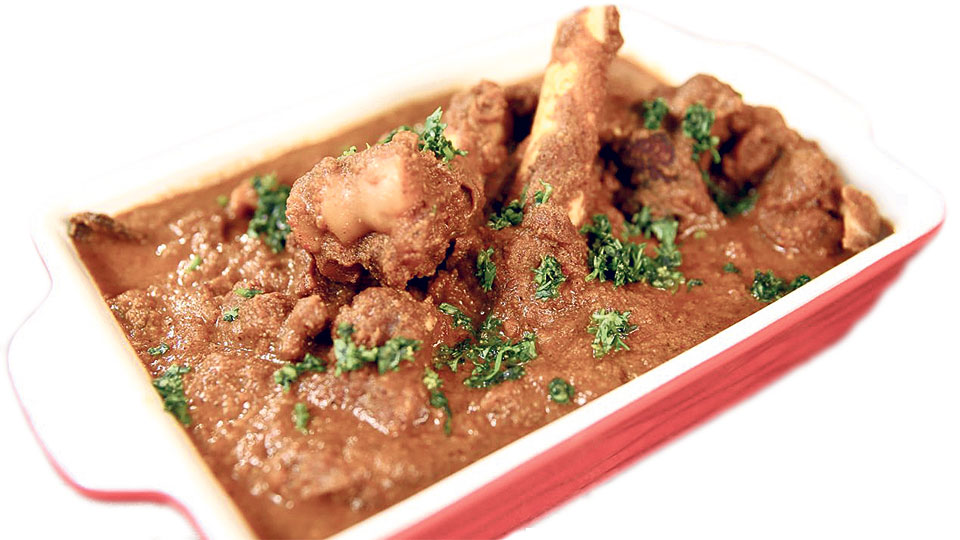
The season of family gatherings and get-togethers is here. So we know we can look forward to a lot of chatter and a lot of good food in the coming days. And as is the case every year, we can also bet on one more thing: Mutton. It’s a tradition after all.
Even though some families and their kitchen heads haven’t decided on the Dashain menu yet, mutton is bound to find its way in. So here is The Week helping you get a head start, in case you are looking for new ways to woo your guests with your mutton dish, we have some professional advice.
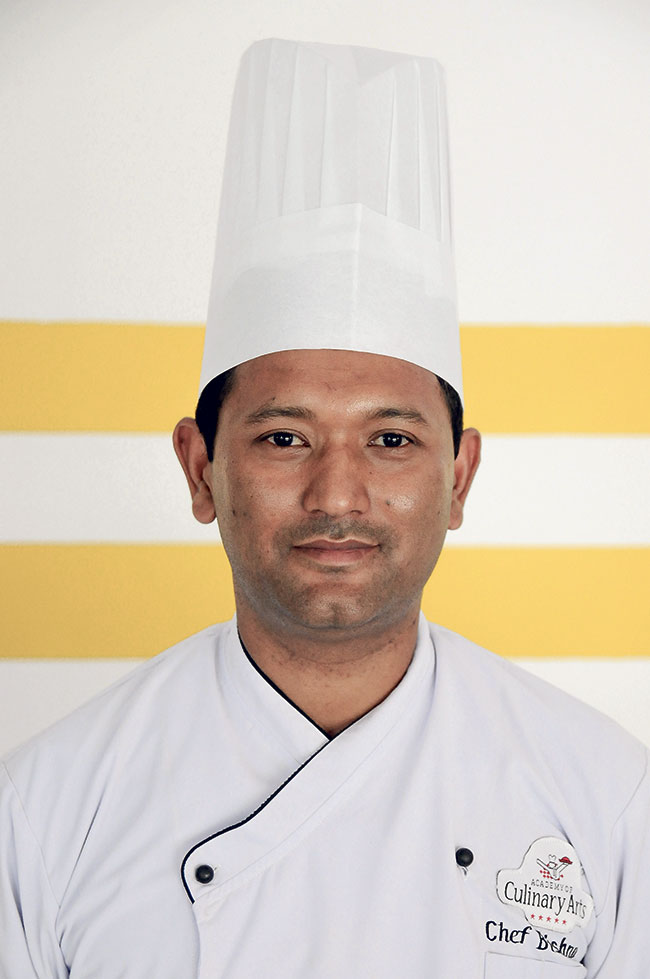 We met Chef Bishnu Maharjan at Academy of Culinary Arts College, Lagankhel. He is the director of kitchen operations there and was just finishing up his class when we caught up with him. Maharjan admits that as a chef he has more experience with cooking meat in a more international/continental way, but then again back home especially during Dashain, apparently he is always more than happy to come back to the good-old masu ko jhol.
We met Chef Bishnu Maharjan at Academy of Culinary Arts College, Lagankhel. He is the director of kitchen operations there and was just finishing up his class when we caught up with him. Maharjan admits that as a chef he has more experience with cooking meat in a more international/continental way, but then again back home especially during Dashain, apparently he is always more than happy to come back to the good-old masu ko jhol.
So while sharing some tips for bringing out more flavor in your mutton curry, Maharjan wants to see if he could interest you in cooking the meat in a more modern, western style this Dashain. Even though he says he is well aware about the limitations of a home kitchen when compared to industrial kitchens, Maharjan assures us that some of his favorite ways of cooking the meat can be replicated at home.
We begin with one of his favorite method of cooking mutton, braising. Many Nepalis are not familiar with this style of cooking but this is a great new way to savor your favorite meat. Here is a brief introduction to braising.
MUTTON CURRY
Now unto our Nepali way of cooking mutton and we can be certain that almost every household has its own recipe and method. However, there are certain trade secrets that might help you extract more flavors from your mutton curry.
While making mutton curry, Maharjan reiterates the two most important factors: marinating the meat and the use of spices. The trick to a memorable mutton curry lies in these simple steps.
• A good long marinade is obviously a real blessing of flavor, moisture, and tenderness for goat meat. Two or three hours just won’t cut it. Most recipes call for overnight marinades and you would be wise to stick with that advice. Also don’t use too much salt. Salt draws the juices of the meat to the surface, making it more likely that you’ll end up with dried-out goat meat by the time you’re done. It also prevents flavor from being absorbed. Salt can be added later, after cooking to taste.
• Where the spices are concerned, be generous. For best results, you can even grind your own spices. This way they not only bring flavor but also texture to the curry. You can just buy the spices whole, toast them and then grind them. Spice grinders are also available in the market if you are up for a long-term investment and commitment. Further, Maharjan also recommends tempering your spices. Don’t miss out on it. Just take mustard seeds, cumin, cloves or even cinnamon in vegetable oil and temper them whole until you hear them sizzle to release flavor. It may seem like a tiny detail but it can’t be stressed enough. This is the way you should begin to cook any kind of curry.
Braising
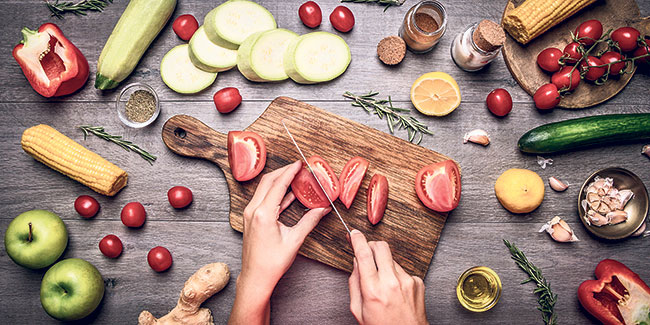 Braising is usually a two-step process: browning of the meat and vegetables, followed by long, slow simmering of the dish. You let it simmer in a relatively small amount of liquid whilst covering it.
Braising is usually a two-step process: browning of the meat and vegetables, followed by long, slow simmering of the dish. You let it simmer in a relatively small amount of liquid whilst covering it.
When we braise a tough cut of meat, we can make it very tender to the point where it falls off the bone. The steps too aren’t that complicated. We simply start by seasoning the meat. Then put some oil in a deep pot and sear the meat. We want to make it dark brown. After that, set aside the meat and move on to the vegetables.
From carrots, turnips, potatoes, beets to cabbages and even lentils and chickpeas, the options for a vegetable braise are plenty. We dice them up in small pieces and then sear them as well.
Then we get fancy with wine. When the vegetables are nice and soft, deglaze the pan with wine. The acidity of the wine will later balance the richness of the meat.
So after a while, add the meat back to the pot with the veggies. Add stock or water halfway up the meat. The meat should not be submerged because you’re braising, not boiling. First turn up the heat then after a while lower it to a simmer. The secret to braising is to take your time. It’s low and slow – a low heat setting over a long period of time will make the meat tender and delicious.
Make sure you check on it occasionally. The liquid level needs to remain the same, so add more if necessary. It will take about an hour and a half to three hours to become fork-tender. As soon as you find the meat falling of the bone, you know it is done. Cooking any longer will dry out the meat.
Tip: “The cut of the meat is important while settling on the way you want to cook it.”
Certain tough cuts and types of meat are meant to be cooked in ways different from tender cuts of meat. This isn’t a practice yet in many Nepali homes but if you want to try new styles of cooking mutton, this is a factor that needs to be considered. For example, while you can use leg chops to grill or barbeque, it’s best not to braise them. Shanks, the leg bone beneath the knee, would be a much better option.
You May Like This
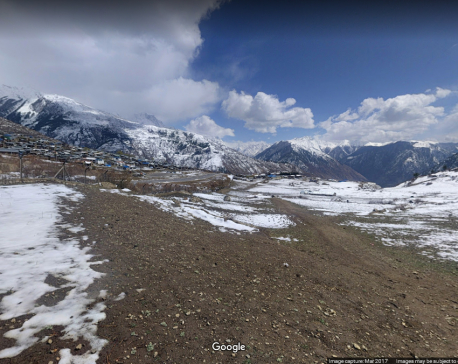
Biplav Maoists halt food supplies, Humla, Mugu under food shortage
HUMLA, Jan 21: For the past 10 days, the Biplav led Maoist faction have seized daily food supplies and 300... Read More...

For a little festive cheer
The days leading up to Christmas will see some really special events and markets in our capital city. Whether you... Read More...
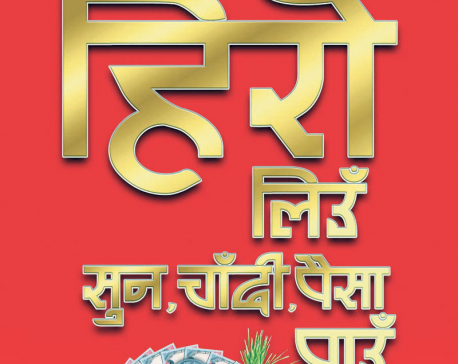
Hero launches festive offer
KATHMANDU, Aug 31: Nepal General Marketing, the authorized distributor of Hero two-wheelers vehicles for Nepal, has announced a festive offer --... Read More...





_20220508065243.jpg)


Just In
- Over 400,000 tourists visited Mustang by road last year
- 19 hydropower projects to be showcased at investment summit
- Global oil and gold prices surge as Israel retaliates against Iran
- Sajha Yatayat cancels CEO appointment process for lack of candidates
- Govt padlocks Nepal Scouts’ property illegally occupied by NC lawmaker Deepak Khadka
- FWEAN meets with President Paudel to solicit support for women entrepreneurship
- Koshi provincial assembly passes resolution motion calling for special session by majority votes
- Court extends detention of Dipesh Pun after his failure to submit bail amount










Leave A Comment